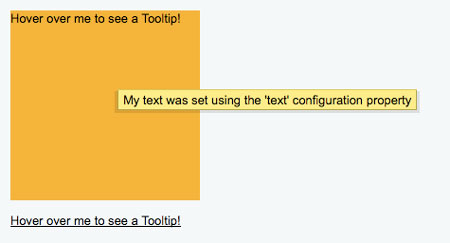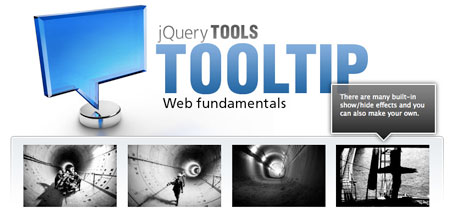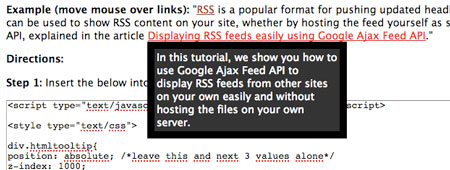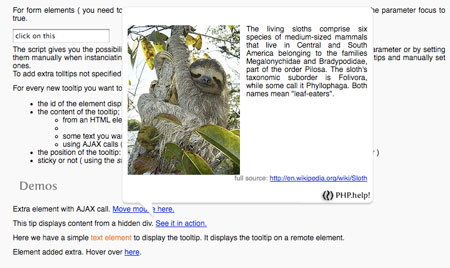
Thanks to javascript frameworks, creating visual effects on your website has become quite easy. To create tooltips, just look at these techniques using popular frameworks.
jQuery tooltip plugins
1. jQuery tools tooltip
Easily create simple or complex tooltips, adding some cool effects to it.

2. Simpletip
A simple tooltip plugin with many default options.

3. Tipsy
Create a Facebook-like tooltips effect based on an anchor tag’s title attribute.

4. MB Tooltip
Yet another alternative to create a simple jQuery tooltip.

5. HTML Tooltip
Inline HTML Tooltip lets you define rich HTML tooltips that are embedded directly inside your webpage.

Prototype tooltip plugins
6. Cooltips
Lightweight unobtrusive JavaScript web-browser tooltips replacement technique.

7. Prototip
Easily create both simple and complex tooltips.

8. BlogFish’s tooltip
Totally flexible tooltip with Prototype.

Mootools tooltip plugins
9. Default MooTools tooltip
The basic default tip plugin bundled with MooTools.

10. Mootooltips
Display tooltip messages from HTML elements, Ajax calls or text added manually.

YUI tooltip plugins
11. YUI tooltip
Tooltip is designed to be simple to implement with easily-accessed configuration options and visual styling handled entirely via CSS.

Dojo toolkit tooltip plugins
12. Dijit tooltip
Create nice tooltips with this Dojo toolkit widget.

What To Consider In Full Stack Development?
Now that you know about the best plugins to create tooltips, it’s time to learn more about full-stack development. Full-stack development refers to the development of both back-end and front-side portions of a website and application. This term is sometimes used interchangeably with micro-stack development.
In general, this type of development comprises components that are developed from scratch, which are then integrated with the rest of the source code to form full-stack web applications. On the other hand, a micro-stack consists of components that are usually pre-integrated within the existing source code.
There are several things that you must consider in full-stack development, such as the structure of the web pages, the application logic, and the design.
Check these following full-stack development tips:
- If you choose the micro-stack, you’ll be putting more emphasis on the programming language and syntax. This is why it’s important that your choice of programming language and syntax should follow a standard. Else, you’ll be breaking the rules when it comes to coding standards.
- You should make sure that the application logic is well-written and follows certain guidelines. A layout that’s appealing and user-friendly should be implemented so that a user doesn’t lose their focus and attention.
- A web development team should be present to ensure that the design and layout perfectly fit your website’s theme or application. If the developers are not present, then the whole process of web development could be quite frustrating.
- The other thing that you need to consider in stack development is the availability of resources. This is something quite important because if you get a bad project done, then it’ll the result would likely be worse than the original one. To avoid this, you have to make sure that the team you hire is capable of delivering high-quality output.
If you don’t consider these factors, you might end up getting into trouble and not being able to get your web application or website off the ground. So, if you want to choose the right web development company, make sure that you consider the above-mentioned factors because it could save you from a lot of trouble. Learn more about full stack development with NodeJS and React today.

